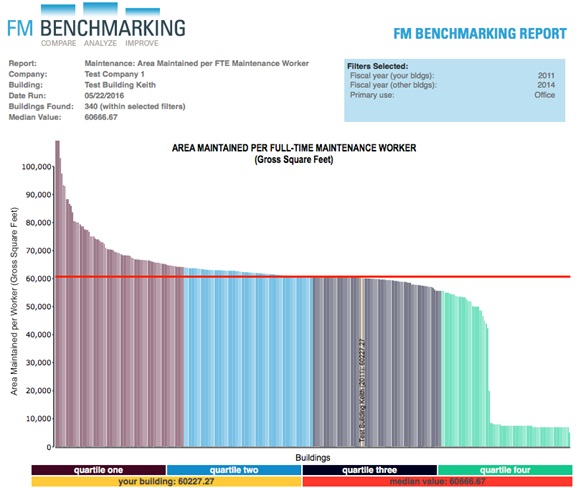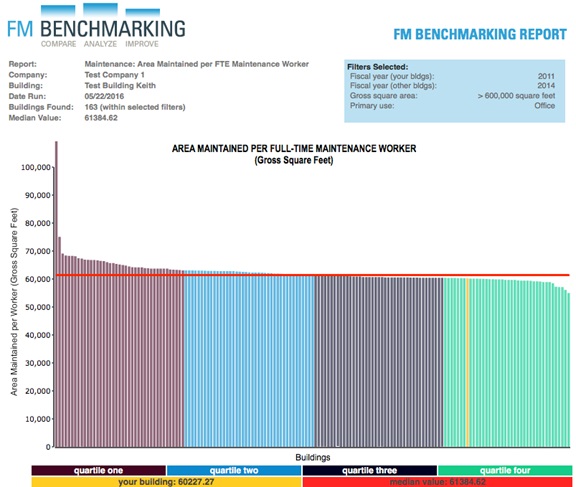May 2016 — FMs are often asked to justify their maintenance staffing levels, most frequently during budget times or when budgets are reduced due to economic conditions. Benchmarked comparisons can be a valuable tool to help with justification questions. One of the most overlooked aspects of benchmarking is its use to support staffing levels.
Benchmarking data can be used to determine appropriate staffing levels for maintenance, janitorial, and security operations. In this article we are going to focus on the maintenance staffing. Using benchmarking comparisons also shows the importance of the FM position in the organization and the impact of staffing decisions over the life-cycle of the building. Without good benchmarking comparisons, you may not realize that staffing levels may need to be increased or decreased to properly maintain the facility. A case easily can be made for benchmarking that will justify the minor amount of staff time it will take to do the calculations.
We have used examples from FM BENCHMARKING to illustrate how easy the process should be. This approach will allow you obtain the key output reports in minimal time. In the following example we benchmarked an office facility for maintenance staffing levels.
Comparing your maintenance staffing levels with other types of facilities may give you the wrong perspective on your performance. For maintenance staffing, Figure 1 shows:
- First quartile performance of 64,125 GSF per FTE worker
- Median performance of 60,667 GSF per FTE worker, and
- Third quartile performance of 55,600 GSF per FTE worker
Our facility’s staffing level is shown on the yellow line at 60,277 GSF per FTE worker. A prudent staffing plan would be to utilize the first quartile value of about 64,000 maintained GSF per worker. So our 1,250,000 GSF building appears slightly overstaffed with 21 FTE maintenance workers. First quartile performance would be 19 FTEs.

Figure 1 – Area Maintained per FTE Maintenance Worker:
Filters: Type of facility (Office) + >600,000 GSF
Provided courtesy of FM BENCHMARKING
How the workers are allocated among the trades would depend in part on the quality of the construction. You would most likely staff for a combination of electricians, HVAC/mechanical, controls, and general trades. Using benchmarking data in this way provides a rational and easily defended approach to developing a staffing plan.
Perhaps the size of the facility may have an impact on the staffing levels. In a large facility the workforce is probably more specialized allowing for increased efficiency; however, they may have longer distances to travel. In Figure 2 we have added the filter of facilities larger than 600,000 GSF (gross square feet), which places our facility’s staffing performance in the fourth quartile instead of the third quartile.

Figure 2 – Area Maintained per FTE Maintenance Worker:
Filters: Type of facility (Office) + >600,000 GSF
Provided courtesy of FM BENCHMARKING
There could be other factors that indicate a need for a slightly higher staffing level such as the age of the facility or the condition of the equipment; in a high-quality benchmarking tool, these considerations may be additional filters that can be turned on. Still, the benchmarking comparisons show our staffing is just a little high and may need some additional review.